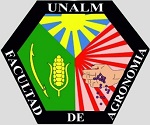Effect of the applications of a biological formulation (Azotobacter salinestris, Bacillus amyloliquefaciens, Rhizophagus intraradices) on the yield of Allium cepa ‘Century’
DOI:
https://doi.org/10.21704/pja.v3i3.1339Keywords:
Biological formulation, Azotobacter salinestris, Bacillus amyloliquefaciens, and Rhizophagus intraradices.Abstract
de Siguas, Arequipa Province, Peru. The concentrations used were 2, 4, and 6 kg ha−1 with 4 applications by means of impregnation to the transplant and via drench every 15 days. The statistical design was through a DBCA with factorial arrangement randomly distributed in four blocks. The tests used were the orthogonal contrast test and Duncan’s multiple comparison test (α = 0.05). The findings showed that the treatment concentrations of 4 kg ha−1 and 6 kg ha−1 resulted in a lower incidence of Fusarium oxysporum, at 6.71% and 9.36%, an ABCPE of 637.78 and 950.14 units, and an exportable yield of 66.34 t ha−1 and 65.42 t ha−1, respectively, displaying significant differences from the control. The first application was statistically significant to the treatments with the highest number of applications, showing a greater exportable yield of 67.54 t ha−1. The best interactions between concentrations and applications were 6 kg ha−1 with 1 application, 4 kg ha−1 with 2 applications, and 4 kg ha−1 with 1 application, with exportable yields of 70.66, 69.61, and 69.11 t ha−1, respectively.Downloads
References
Alarcón, A., Ferrera-Cerrato, R., González-Chávez, M. C., & Villegas-Monter A. (2000). Arbuscular mycorrhizal fungi in the dynamics of appearance of stolons and nutrition of strawberry plants cv. Fern obtained by in vitro culture. Terra Latinoamericana 18: 4–8.
Apcho E., Caballero M. & Miranda R. (2017). Strategic Planning of the Onion in Peru to 2027. Master’s Thesis. Pontifical Catholic University of Peru. Lima Peru.
Banerjee M. R., Yesmin L., & Vessey J. K. (2006) Plant-growth-promoting rhizobacteria as biofertilizers and biopesticides. In M.K. Rai (Ed.). Handbook of Microbial Biofertilizers. (pp. 137−181). New York, NY, USA: Food Products Press.
Bashan, Y., De-Bashan, L., Prabhu, S.R., & Hernandez, J.P. (2014). Advances in plant growth-promoting bacterial inoculant technology: formulations and practical perspectives (1998–2013). Plant and Soil, 378(1–2), 1– 33.
Bly U., Woodard H., & Gelderman R. (2009) Biological inoculants and other products for soybeans during 2009 (44309 and 44409). Soil/Water Research. South Dakota State University, 2009 Research Progress Report. Retrieved from http://extension.agron.iastate.edu/compendium/compendiumpdfs/pr09-13.pdf
Cakmakçi R., Dönmez F., Aydın A., & Şahin F. (2006) Growth promotion of plants by plant growth-promoting rhizobacteria under greenhouse and two different field soil conditions. Soil Biology and Biochemistry 38(6):1482–1487. https://doi.org/10.1016/j.soilbio.2005.09.019
Campbell CL and Madden LV (1990) Introduction to Plant Disease Epidemiology. John Wiley & Sons, New York
Fernández, A. (2006). Micorriza una simbiosis vital en la Naturaleza, [October, 31, 2017]. Retrieved from https://www.consumer.es/medio-ambiente/micorriza-una-simbiosis-vital-en-la-naturaleza.html
Hsiang, T., Jamie, M.D.L.A., & McDonald, M.R. (2008) Effects of Glomus intraradices and onion cultivar on Allium white rot development in organic soils in Ontario. Canadian Journal of Plant Pathology, 30(4), 543-553. Retrieved from https://atrium.lib.uoguelph.ca/xmlui/handle/10214/2379?show=full
Koike, S. T., Gladders, P. & Paulus A. O. (2007). Vegetable Diseases: A Color Handbook, Gulf Professional Publishing. 448p.
Nadeem, S. M, Zahir Z. A., Naveed, M. & Ashraf, M. (2010). Microbial ACC- deaminase: prospects and applications for inducing salt tolerance in plants. Critical Reviews in Plant Sciences, 29(6), 360–393.
Qingxiao, M. (2014). Characterization of Bacillus amyloliquefaciens strain BAC03 in disease control and plant growth promotion. Ph.D. Thesis. Michigan State University. EE.UU.
Ploetz, R. C. (2015). Management of fusarium wilt of banana: A review with special reference to tropical race 4. Crop Protection, 73, 7–15.
Phillips, J.M. and Hayman, D.S. (1970) Improved Procedures for Clearing Roots and Staining Parasitic Vesicular-Arbuscular Mycorrhizal Fungi for Rapid Assessment of Infection. Transactions of the British Mycological Society, 55, 158-161. http://dx.doi.org/10.1016/S0007-1536(70)80110-3
Rajankar, P. N., Tambekar, D. H. & Wate, S. R. (2007). Study of phosphate solubilization efficiences of fungi and bacteria isolated from saline belt of Purna river basin. Research Journal of Agriculture and Biological Sciences, 3(6), 701-703.
Regalado, F. (2002). Incremento en la eficiencia de la fertilización de portainjertos de aguacate mediante la inoculación con micorriza vesiculo Arbuscular. Thesis. Zamorano. Honduras.
Rodríguez, R., Alcantar, E., Covarrubias, G., Zamora, F., García, L., López, R., & Salcedo, E. (2010). Caracterización física y química de sustratos agrícolas a partir de bagazo de agave tequilero. Interciencia, 35(7), 515-520.
Sánchez J. A., Ley-Rivas J. F., Ricardo N. E., & Collazo E. (2015). Efecto de cuatro especies de hongos micorrizógenos arbusculares en la producción de frutos de tomate. Agronomía Costarricense. (1): 47–59.
Soesanto L, Mugiastuti L, & Ruth FR. (2010). Kajian mekanisme antagonis Pseudomonas fluorescens P60 terhadap Fusarium oxysporum f.sp. lycopersici pada tanaman tomat In vivo. J. Hama dan Penyakit Tumbuhan Tropika 7(1): 53–61.
Walker, C. y Mizecw, M. (1982). Populations of endogonaceous fungi at two locations in central Iowa. Canadian Journal of Botany 60: 2518-2529.










